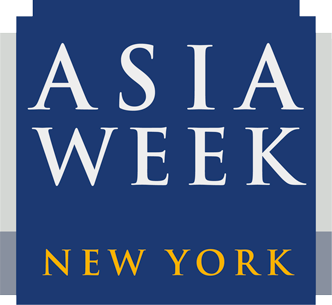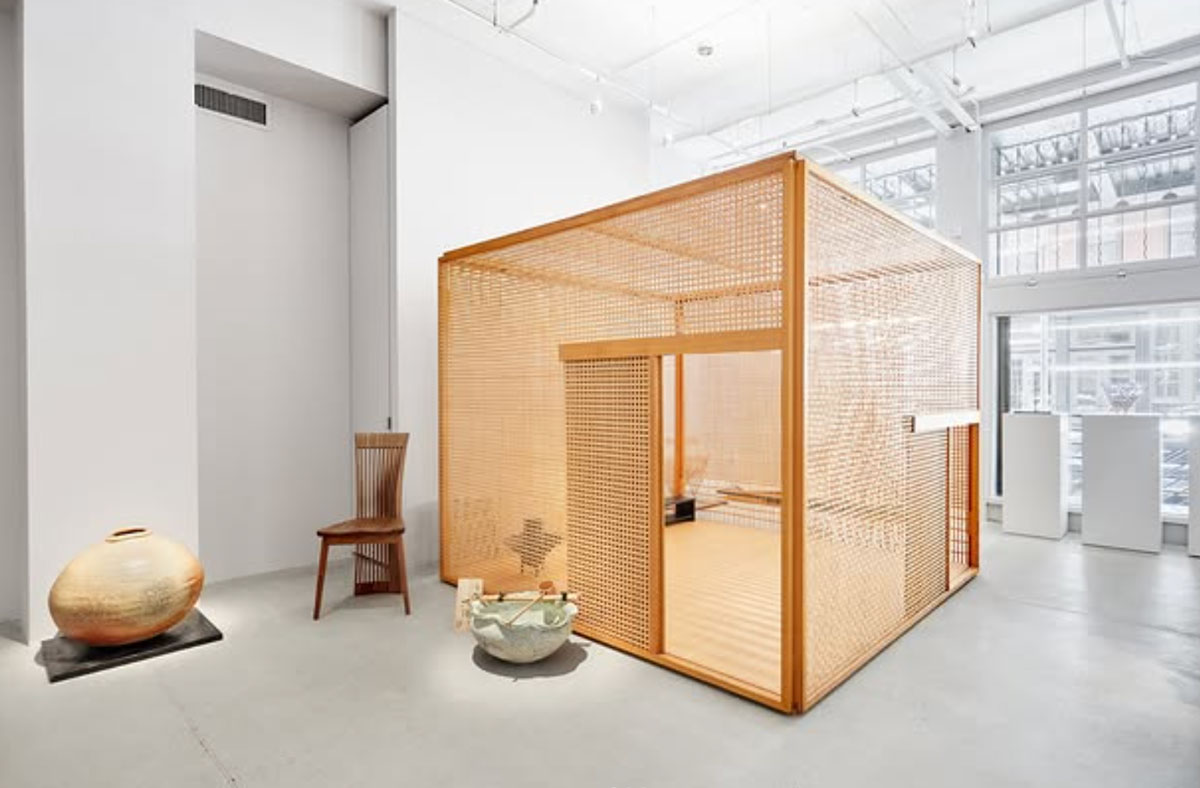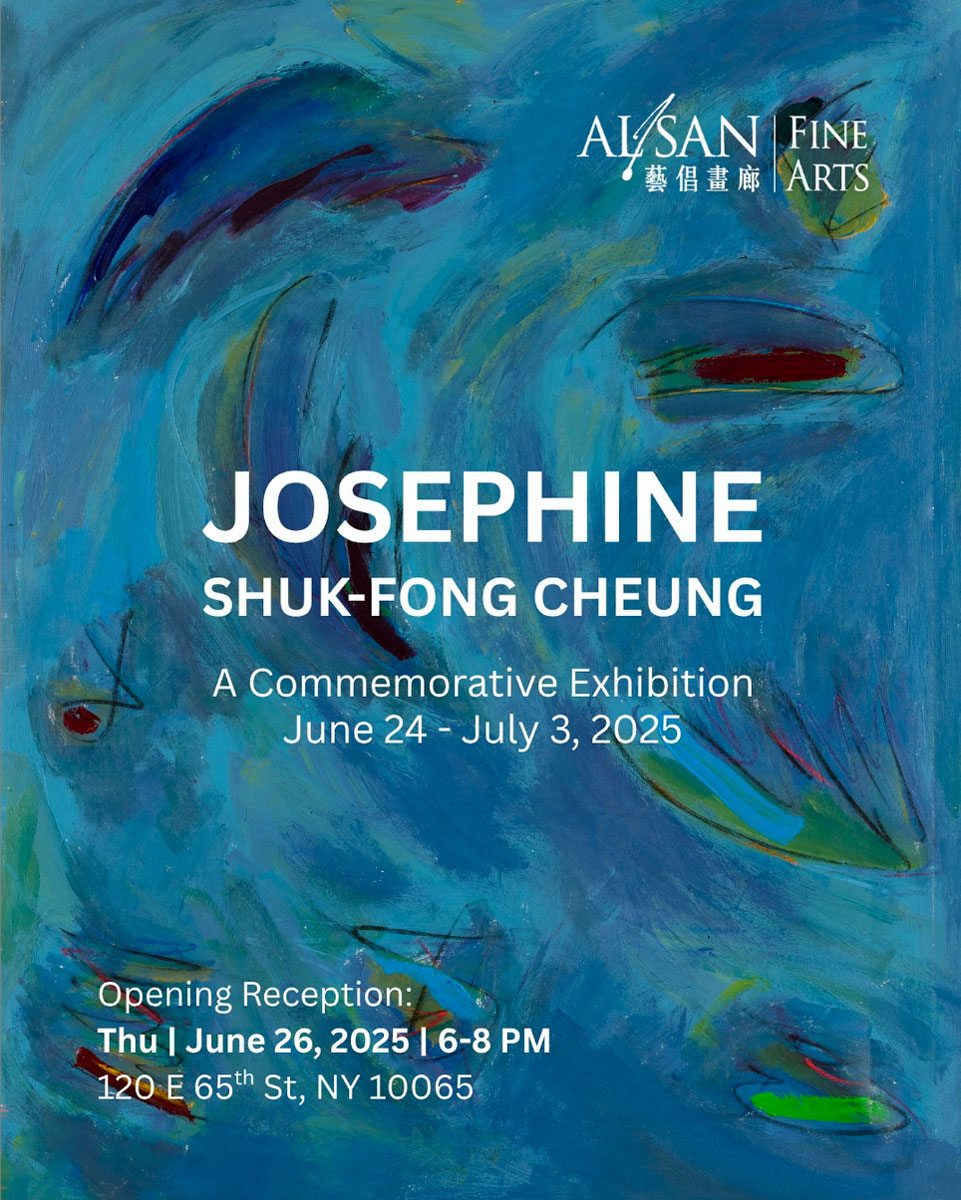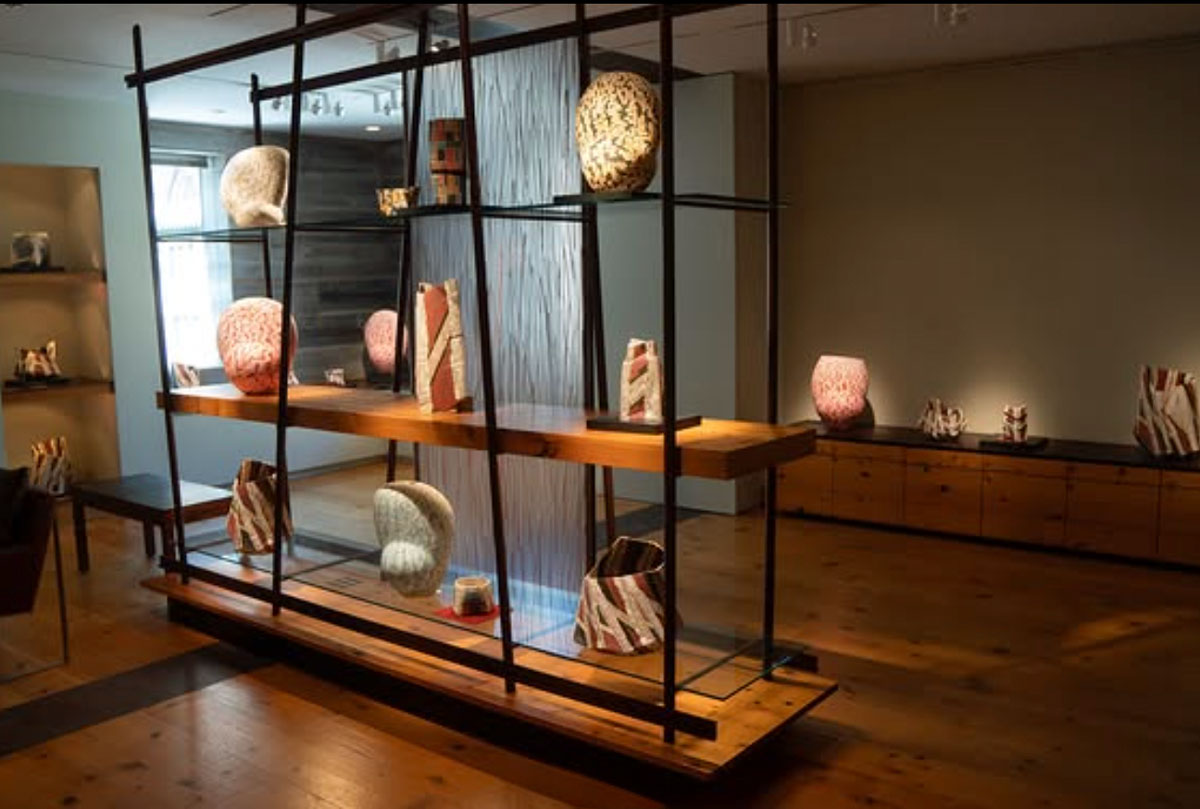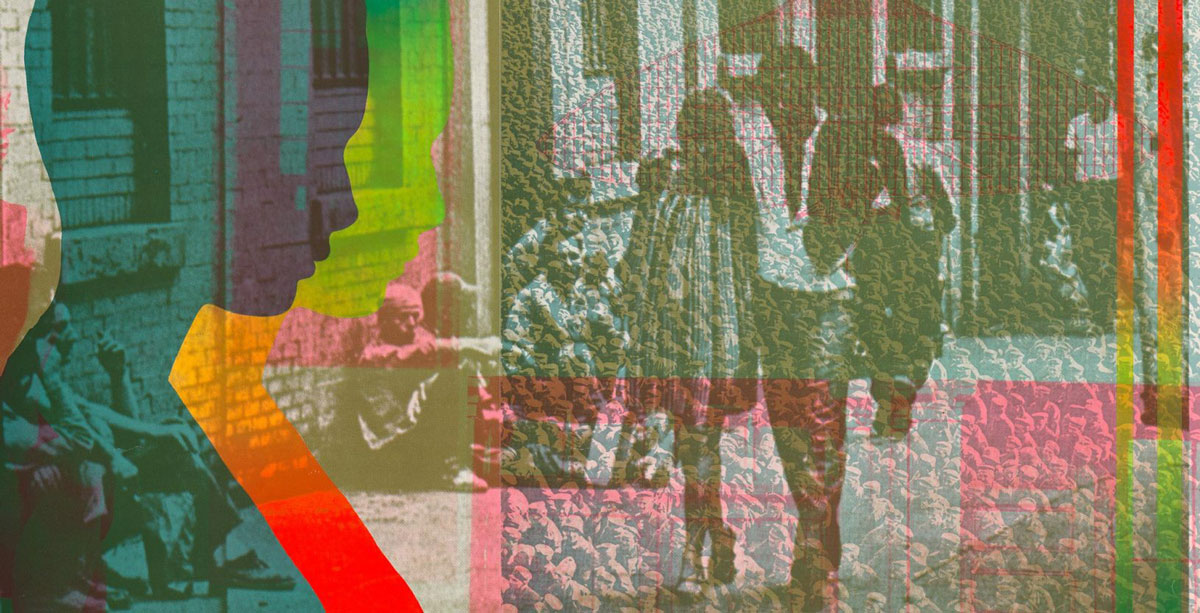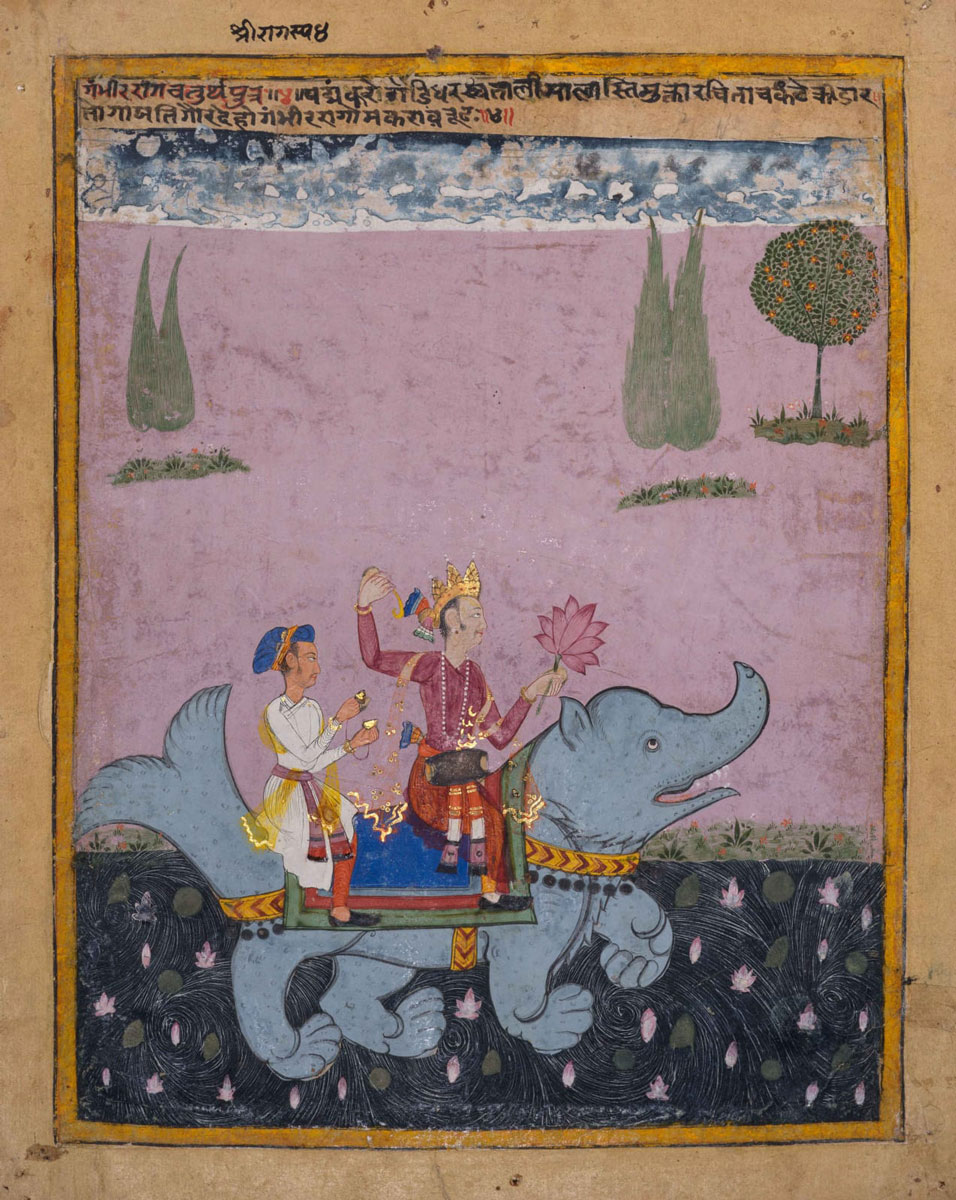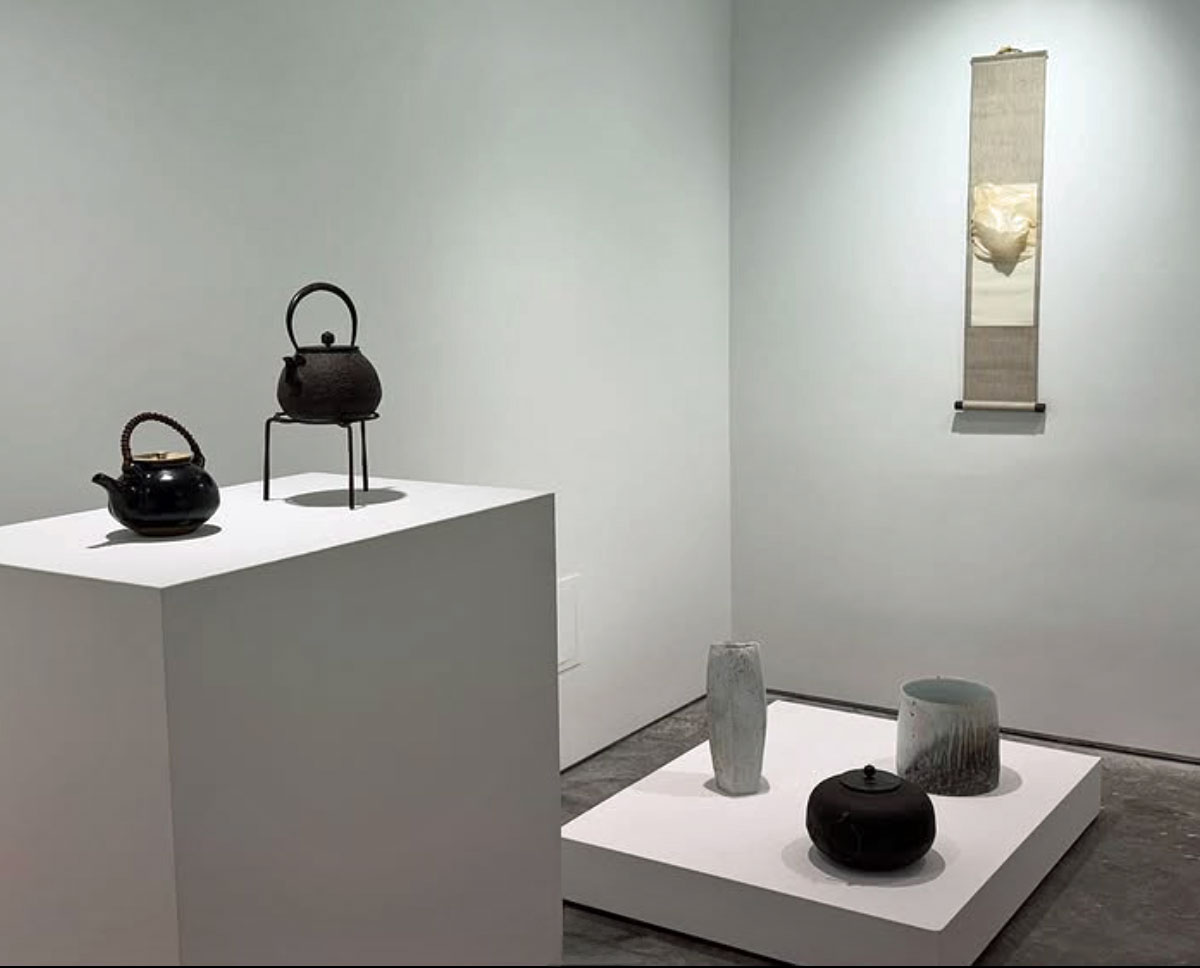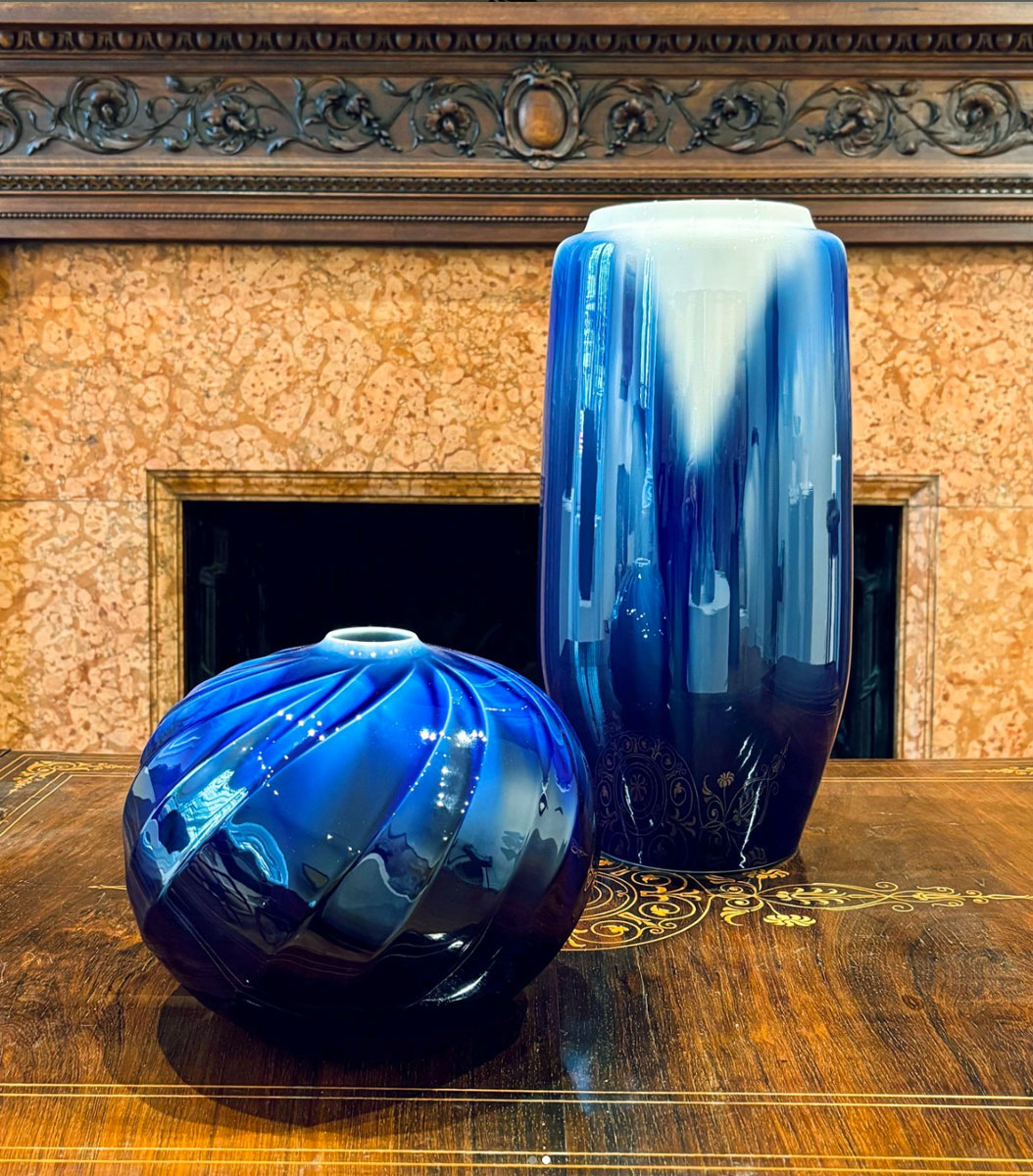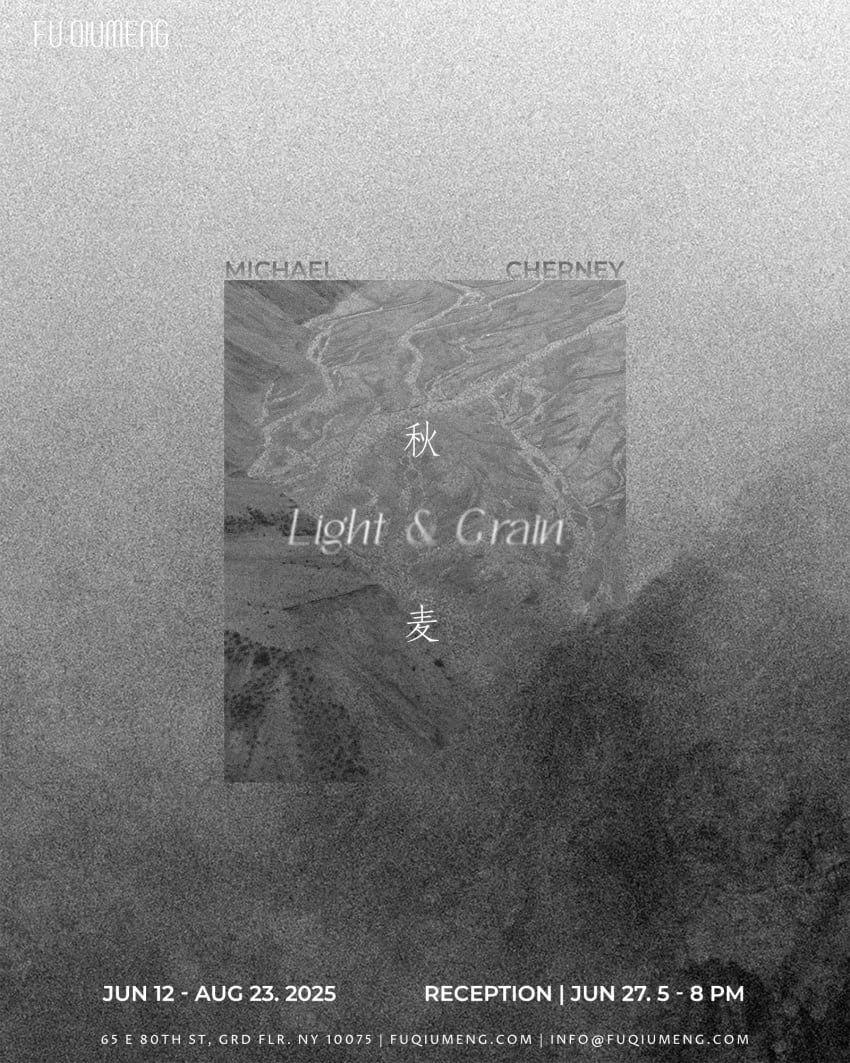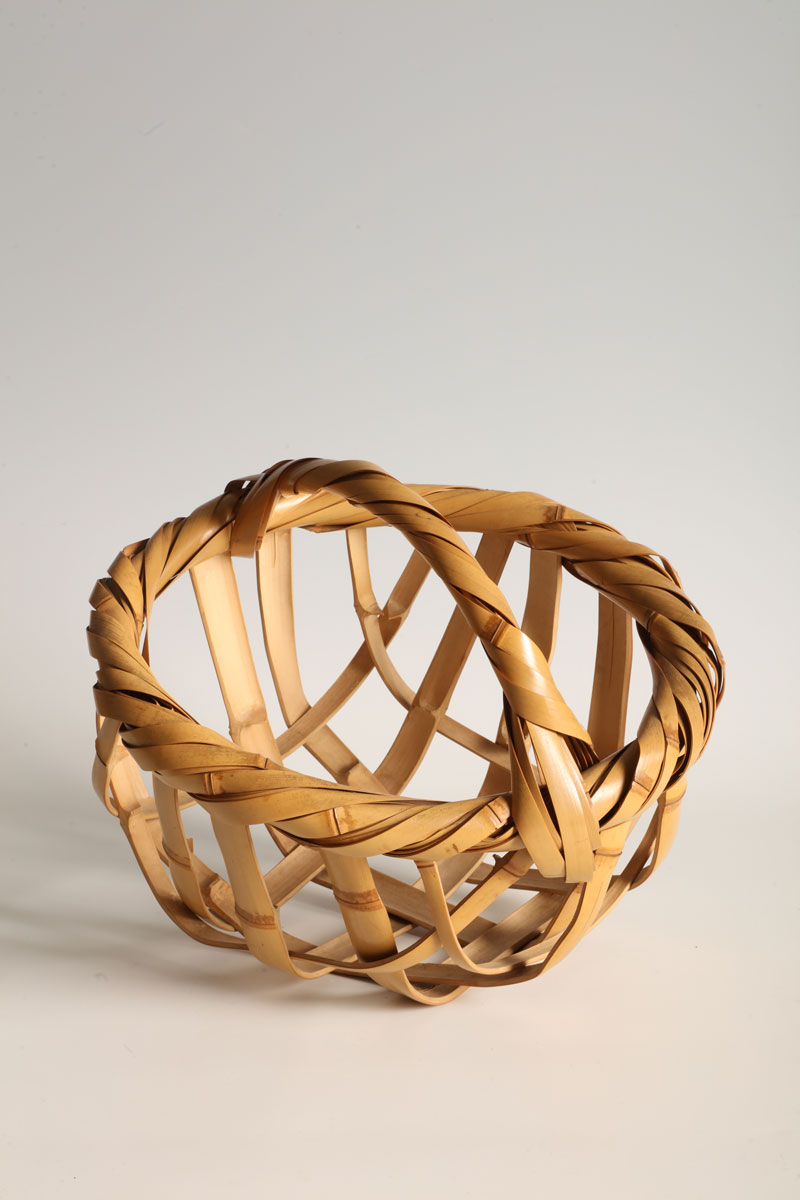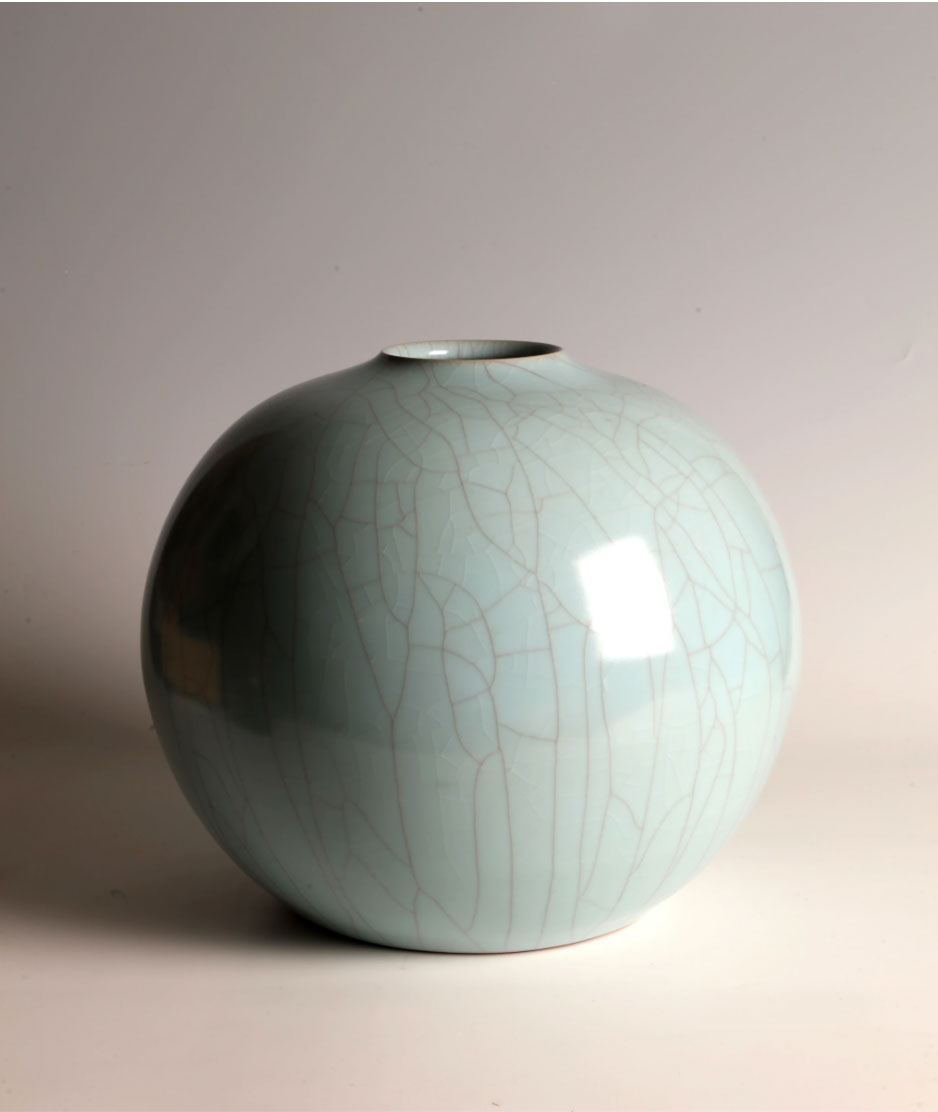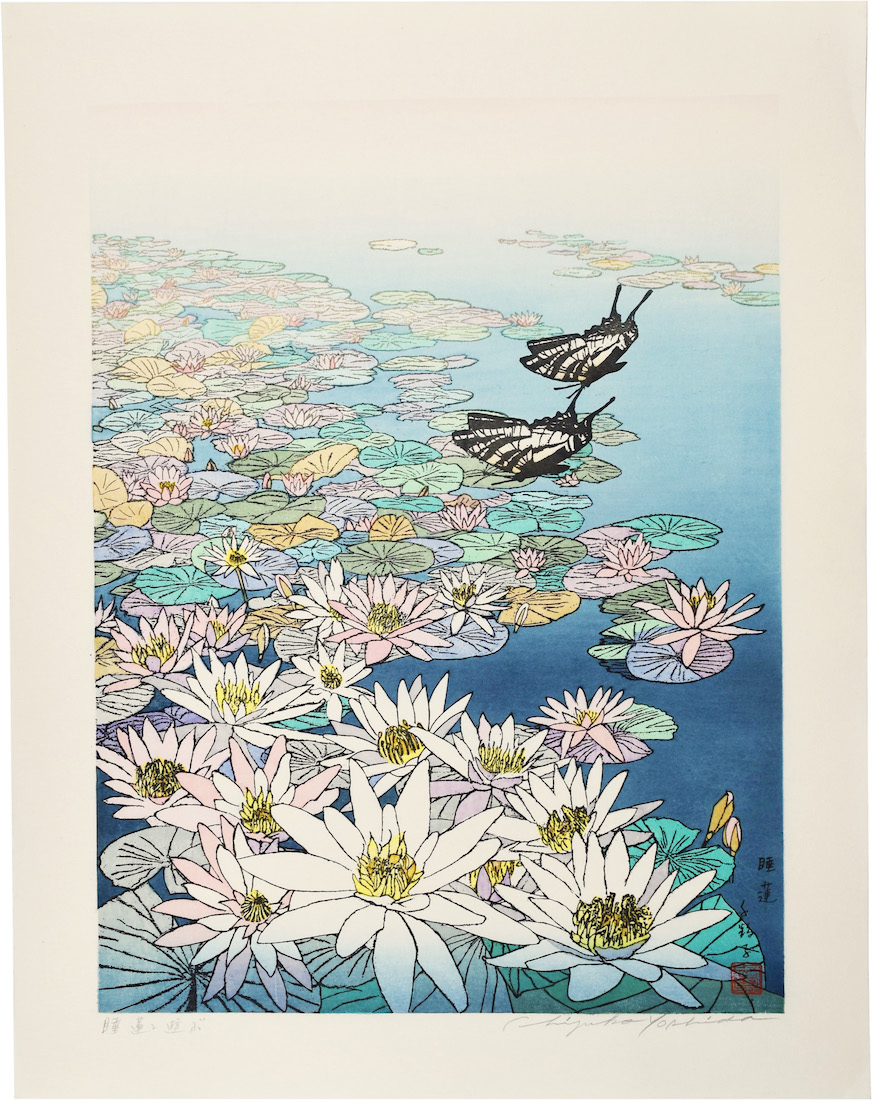
Chizuko Yoshida (1924-2017), Butterflies with Water Lily (Suiren ni Asobu), self-carved, self-printed; titled and signed at lower right, Suiren, Chizuko, with red artist’s seal Chizuko; titled and signed in pencil on the bottom margin, Suiren asobu, Chizuko Yoshida, ca. 1985, 20 3/4 x 16 1/4 in. (52.8 x 41.2 cm)
Chizuko Yoshida: A Vibrant Legacy
Summer 2025
Online
Scholten Japanese Art is honored to announce the gallery’s most recent works by Chizuko Yoshida (1924-2017) received from the Yoshida Family Collection and available now on their website.
Before marrying Hodaka Yoshida, Chizuko Inoue led a life steeped in the arts—studying violin, dance, and traditional Western-style painting. After graduating from Sato Girl’s High School in 1941, she trained at the Hongo Art Institute and with woodblock printmaker Kitaoka Fumio. In the late 1940s, she joined the avant-garde Century Society (Seiki no kai) and shifted from academic realism toward abstraction.
In 1956, Chizuko co-founded the Joryu Hanga Kyokai (Women’s Printmakers Association) together with nine other printmakers including Minami Keiko (1911-2004), Iwami Reika (1927-2020), Enokido Maki (b. 1938), Shishido Tokuko (b. 1930), and Kobayashi Donge (b. 1926). Active through 1965, this group was a crucial platform for female printmakers.
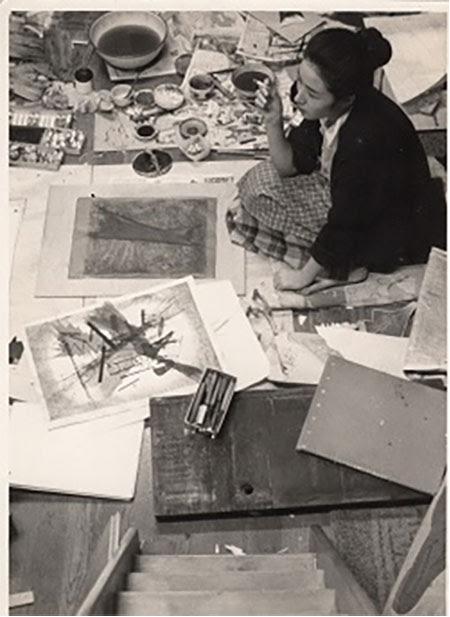
Chizuko Yoshida (College Women’s Association of Japan)
From the mid-1980s, she received major commissions, including seasonal butterfly-themed prints for a major construction company. Issued in limited editions of 100 and displayed in hotels and offices, the entire run was purchased by the company—leaving only 10 to 15 artist’s proofs of each design, as such only proofs were ever available directly from the artist.
In 1985, a new high-end mail-order company commissioned large-format butterfly and floral prints from Chizuko, marketed as luxury collectibles in limited editions of just 20 to 40, with the artist perhaps retaining the other half of the edition.
Later in her career, Chizuko pioneered a fusion of photoetching and traditional woodblock printing, contributing to the prestigious One Hundred Views of Tokyo: Message to the 21st Century, a decade-long project featuring 100 prints from 100 artists, which was conceived and published by the Japan Print Association starting in 1989.
Don’t miss out and explore these remarkable works today by clicking here.
